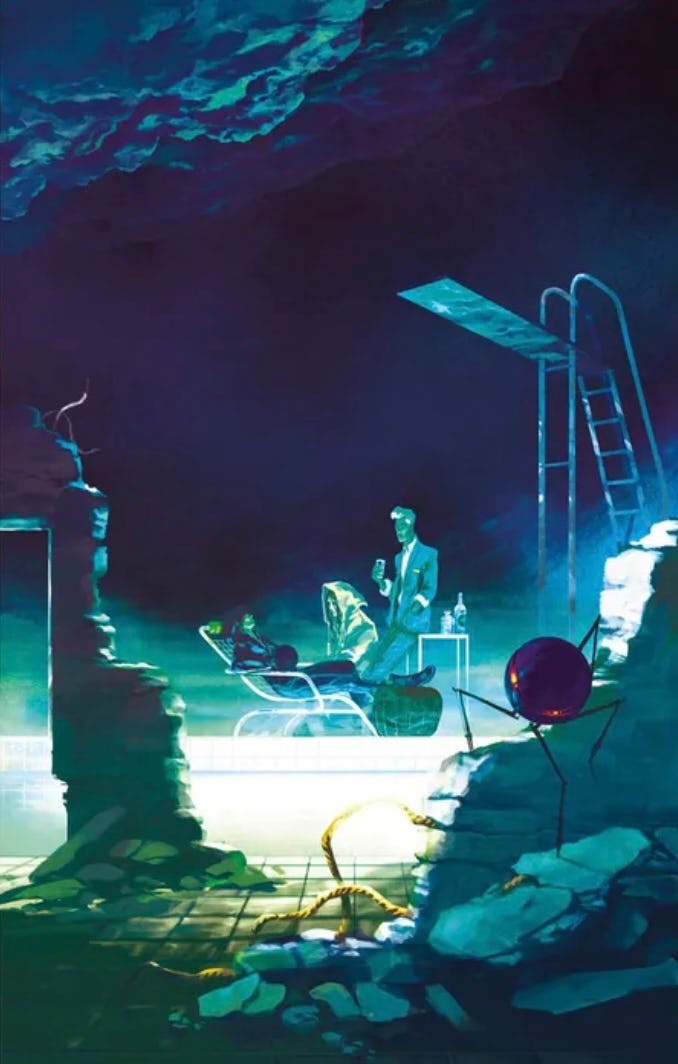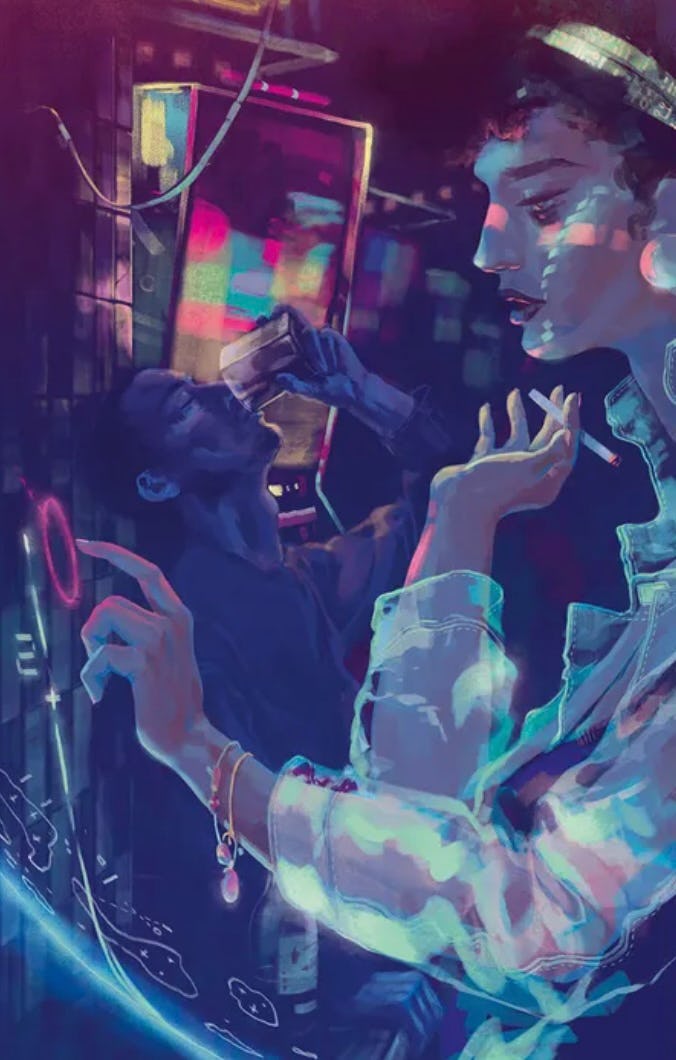
In 1982, when Blade Runner and Tron were in theaters, author William Gibson was trying to create a new kind of science fiction novel, but worried he’d already been beaten to the punch by movies. Published in 1984, the book was Neuromancer, a seminal event in the science fiction world, and, for most fans, the beginning of the subgenre known as cyberpunk. And now, 41 years after its initial publication, Neuromancer has been given an amazing upgrade ahead of its own highly anticipated Apple TV+ adaptation. The Folio Society has just released a brand-new edition of Neuromancer, with incredible, lush illustrations, and a new foreword revealing letters from young William Gibson worrying about the quality of what today is nothing short of a masterpiece.
For those unaware, The Folio Society is a London-based publisher that specializes in special hardcover editions of beloved books. From James Bond to Dickens and more recent contemporary books, The Folio Society doesn’t just create incredible reissues of books you’ve already read — these are works of art.

The new Neuromancer is no exception. If the Apple TV+ series is looking for inspiration, the interior art from illustrator Anna Mill should now be the gold standard of how we envision the characters of Case, Molly Millions, Armitage, and Maelcum. In addition, the environments of The Sprawl and Chiba City are rendered in a timeless style, with touches of retro sci-fi paintings that aficionados might associate with the work of Chris Foss or Michael Whelan. That said, Mill’s illustrations don’t go for any kind of full realism, and in rendering the titular AI “Neuromancer,” she imbues it with a perfect amount of surrealism.
The book itself comes in an incredible slip case, and the almost innocuous cover is cleverly designed to emulate one of the “decks” that Case uses to jack into cyberspace. Essentially, by opening the book, you are jacking into it, with the simple, slick silver cover acting as a way to hide the complexities within.
Aesthetics aside, the joy of this edition of Neuromancer also comes from the wonderful foreword by editor Malcolm Edwards. In the 1980s, Edwards was responsible for publishing Neuromancer in England for the well-known British publisher Gollancz. At the beginning of this version of the book, Edwards reprints letters between himself and Gibson from the time before Neuromancer was actually published in the US by ACE Books. In these brief letters, Gibson swears a lot and worries about the relevance of his book.

In one particularly funny letter, Gibson writes about his short story, “Burning Chrome,” getting published in an issue of Omni, alongside photos from Tron, which Gibson calls “f*cking Tron.” Here, he also worries that the aesthetics of both Tron and Blade Runner will overshadow the success of his in-progress novel, writing to Edwards: “First really original gimmick I contribute to the genre and I’m scooped by f*cking Disney. Jesus.”
Of course, nobody who loves Neuromancer feels that Tron or Blade Runner are somehow better. What’s wonderful about Neuromancer’s arrival in 1984 is that, in some ways, curious sci-fi fans were prepared for it, in part, by those two very different films. Neuromancer is not simply Tron Runner, and if for some reason you’ve never read it, this new edition from The Folio Society isn’t a bad place to start. As much as the book is an art object, it's also wonderfully readable and renders the story better than many of the more contemporary paperback editions.
Neuromancer was never made into a movie in the 20th century, though a short story set in the same universe, “Johnny Mnemonic,” was. Reading this version of the book will make it clear why. Once you start turning the pages of Neuromancer, you can’t stop. In that way, it's more like a binge-worthy TV series than a film, making its future as a 21st-century TV series somewhat perfect. Whether or not that series can live up to the book remains to be seen, but for now, the novel exists in what is almost certainly its most perfect form yet.








